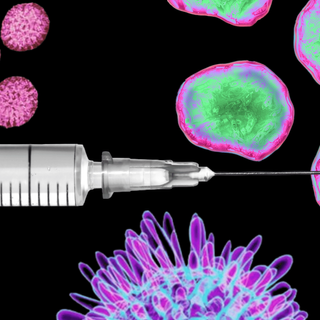From 2015 to 2019 in Assam, 51,000 women sought treatment for complications arising from unsafe abortions. In Madhya Pradesh, 36 women died in 2018 and 56 women died in 2019 from unsafe abortions. As recently as January 2021, a 15-year-old girl died from pregnancy-related complications in Bareilly, Uttar Pradesh, after being denied permission to abort. A 2019 study analysing a sample of 1.8 million women from nine states found that two-thirds of abortions in India are unsafe. Despite being completely preventable, unsafe abortion continues to be the third leading cause of maternal deaths in the country. The legal framework on abortion in India, along with the dismal investment in public health care, act as major barriers to safe abortion access and prevent pregnant persons from getting the health care services they need.
The situation calls for major reform to the Medical Termination of Pregnancy (MTP) Act, 1971, which legalized abortions under certain conditions. But the Medical Termination of Pregnancy (Amendment) Bill, 2020 — introduced and passed in the Lok Sabha and due to be tabled before the Rajya Sabha on Tuesday – does not contain the solution. While the MTP Bill proposes a few important reforms to the MTP Act, such as increasing the gestational upper-limit for termination of pregnancies to 24 weeks for certain categories of women, it still does not give pregnant persons autonomy over the decision to terminate; instead, it requires the approval of doctors for abortion at any stage of pregnancy.
One significant amendment proposed in this Bill is the constitution of Medical Boards for determining whether a pregnancy that has advanced beyond 24 weeks can be terminated, subject to the diagnosis of foetal abnormalities. Each board must have one gynaecologist/obstetrician, one paediatrician, and one radiologist. In addition, every state and union territory has the discretion to appoint more members as they see fit. The requirement of having at least three specialist doctors will make constituting these boards unfeasible in many parts of the country, and practically impossible in others, due to the sweeping shortages of doctors across India.
In a recent study by the Centre for Justice, Law and Society (CJLS), Jindal Global Law School, we found there is a dire shortfall of doctors in urban, rural, and scheduled regions of the country. The National Health Profile 2017 indicates that India has a mere 1 million qualified doctors for a population of 1.3 billion people. At Community Health Centres (CHCs), data from 2015 to 2019 show a dire shortage of 81.89% in specialist doctors. Even states that invest well in public health, such as Goa and Kerala, severely lack doctors at CHCs. This means that most abortions happen in the private sector or at home, which adds to the financial burden on pregnant persons. The inaccessibility of abortions in the public sector also means that pregnant persons may be compelled to resort to unsafe abortions, which can lead to serious complications for their health.
Related on The Swaddle:
India Needs More Abortion Providers. Let the MTP Bill Enable Them.
On average, most Indian states and union territories had a shortfall of over 80% in the availability of obstetricians and gynaecologists. The research also revealed an abysmal shortfall of other specialists (paediatricians and radiologists) across the country. For example, Haryana has had a consistent 90% vacancy in doctors from 2015 to 2019. Many states such as Tamil Nadu, Arunachal Pradesh, and Gujarat have recorded a near-complete absence in the availability of specialists, especially in rural areas. Punjab, Haryana, and Rajasthan also showed the highest rates of abortion complications, with a quarter or more of pregnant women reporting the same.
Rural South India does not fare much better, with a 57.2% shortfall in gynaecologists and obstetricians, a 61.4% shortfall in paediatricians and a 68% shortfall in radiologists. Tamil Nadu actually had a 100% shortfall of specialist doctors in 2015, with none of 1,540 required positions filled. Several states in the study have recorded a 100% shortfall in the specialists required.
With such shortage of medical professionals, attempting to set up Medical Boards, as outlined in the MTP Bill, will be a futile endeavour. As the requirement is for gynaecologists/obstetricians, paediatricians, and radiologists as mandatory members of the board, the acute shortage of specialists will mean that in many places the boards will not be functional. Pregnant persons will either have to travel longer distances to access a working board or be forced to approach the courts to seek approval for terminations. Pregnant persons have petitioned several courts in the past seeking permission to terminate their pregnancies. In each case, the courts have ordered for a medical board to be set up, on an ad-hoc basis, to give definitive medical opinions on whether the pregnancy can be terminated. Evidence suggests these boards end up causing unnecessary delays in the process, which results in pregnancies getting to very advanced stages by the time permission for abortion is granted.
When a system is already dysfunctional, how can legislators further institutionalise it in the name of women’s rights? Health care access is disparate across the country, and structural inequalities – due to caste, class, religion, gender, and other factors – that impede access to health care services will be exacerbated if medical boards are to be instituted at a state or even district level. Unsafe abortions can easily be prevented with legal reforms that center the reproductive autonomy of all persons. Instead of stripping agency away from pregnant persons by making them navigate complex bureaucratic layers of authorization – whether by individual doctors, by medical boards, or by the judiciary – the law should allow for abortions at will. This will ensure that pregnant persons are not compelled to undergo unsafe abortions and will make reproductive health care more accessible to everyone. At this stage, it is imperative that the MTP Bill is sent to the Standing Committee for reconsideration. This provision must be amended.




